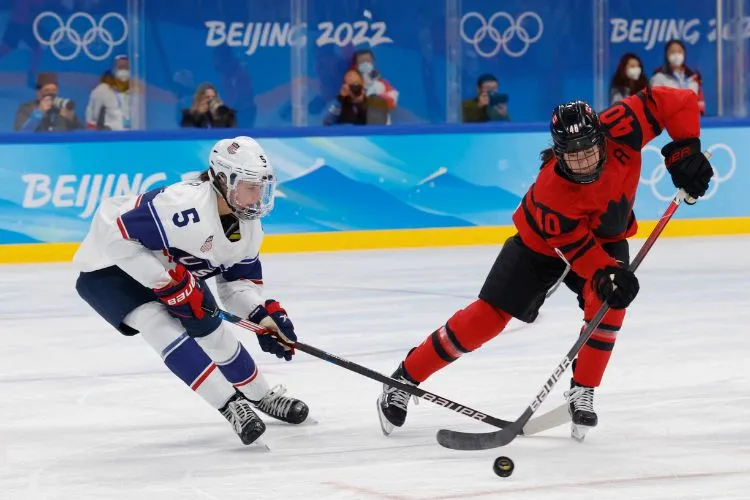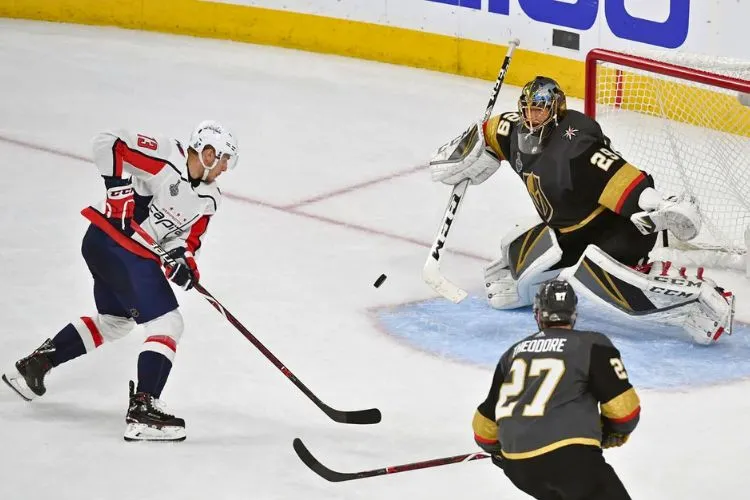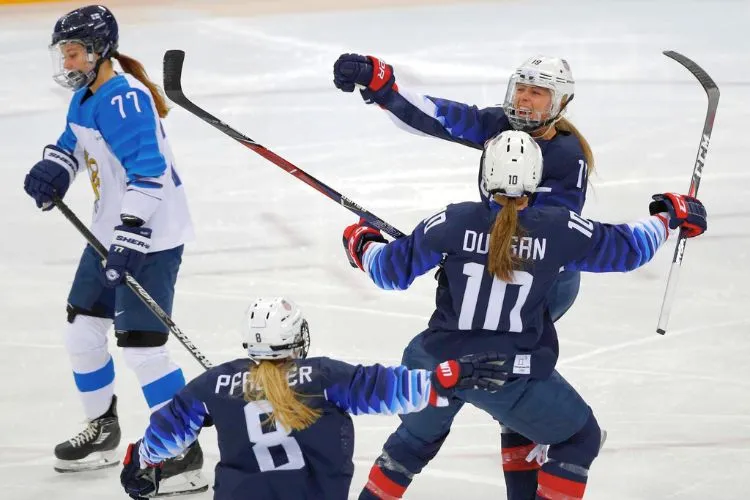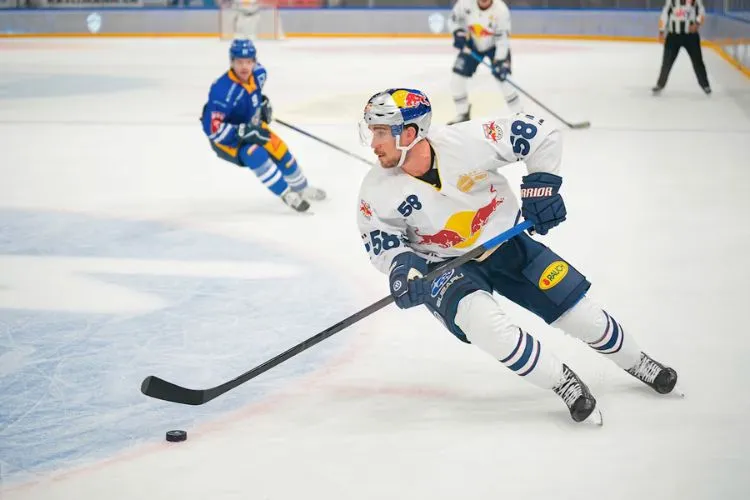In the high-paced and sometimes aggressive world of hockey, understanding the game’s lexicon is crucial for fans and players alike.
Among the various statistics and terms, PIM, or Penalty Infraction Minutes, stands as a key metric that offers deeper insights into a player’s or team’s discipline on the ice.
This comprehensive guide aims to explore what is PIM in hockey, shedding light on its significance, how it’s calculated, and its impact on the game and those who play it.

What Does PIM Stand For?
At its core, PIM represents the total time a player or team has been penalized over a period, typically quantified in minutes.
It serves as a numerical value assigned to the infractions committed during a game, reflecting how often a player or team runs afoul of the official rules.
What is PIM in Hockey?
The primary role of PIM in hockey is to quantify discipline or the lack thereof. It acts as a deterrent against rough play, ensuring the game’s safety and fairness.
High PIM figures can significantly influence game outcomes, as penalties offer opposing teams chances to capitalize on power plays.
Types of Penalties and Their PIM Values
Penalties in hockey are varied, each attracting a specific duration that contributes to PIM.
Minor Penalties, the most common, include actions like tripping, holding, or interference. These infractions cost the offending player two minutes in the penalty box.

Major Penalties are more severe, involving physical altercations such as fighting or dangerous plays like boarding. These penalties result in a five-minute sit-down for the involved player(s), regardless of whether a goal is scored against the penalized team.
Misconduct Penalties dive into the realm of behavior, penalizing unsportsmanlike conduct or deliberate intent to injure with ten minutes in the box. Interestingly, these do not create a manpower disadvantage but do remove the player from a significant portion of the game.
Lastly, there are Game Misconduct and Match Penalties. These are for severe infractions, leading to the player being ejected from the current game and often facing further disciplinary action.
Calculating PIM
The process of tallying PIM is straightforward, with each penalty adding its respective minutes to a player or team’s total.
Official scorers at games keep meticulous records, ensuring that each infraction’s duration is accurately reflected in the game’s statistics.
Strategic Implications of PIM
While penalties can sometimes stem from a player defending a teammate or attempting to shift game momentum, accruing high PIM has its drawbacks.

It not only offers opponents opportunities to score via power plays but can also lead to key players spending too much time off the ice. Teams with high PIM often have to adapt their strategies, playing more conservatively to avoid further penalties.
PIM’s Influence on Player and Team Reputation
A high PIM can be a double-edged sword. On one hand, it can denote a player’s toughness and willingness to stand up for teammates.
On the other, it can signal a lack of discipline, potentially harming the team’s chances of success. Players known for high PIM must navigate the fine line between aggressive play and detrimental penalties.
Historical Context of PIM
The evolution of penalty enforcement in hockey reflects the sport’s dynamic nature and its response to player safety concerns and strategic game developments. Initially, penalties were less standardized, with rules and their enforcement varying significantly by league.
Over the years, the introduction of more precise regulations—such as the distinction between minor and major penalties, and the implementation of misconduct and game misconduct penalties—has shaped modern hockey’s disciplinary landscape.
Notable incidents, like excessively violent altercations or plays resulting in serious injuries, have often been the catalyst for these changes, pushing the league to introduce stricter penalties or refine existing rules.
This ongoing evolution aims to balance the game’s inherent physicality with fairness and player safety, significantly impacting PIM statistics and how the game is played and officiated.
PIM and Its Impact on Game Strategy
When a player incurs a penalty, resulting in time spent in the penalty box, the dynamics on the ice undergo a significant shift.

Teams on the power play capitalize on their numerical advantage, often deploying specialized units designed to exploit the extra space and reduced defensive capabilities of the opposing team.
Conversely, teams facing a penalty kill must adjust to a defensive strategy, emphasizing ice coverage and strategic clearing of the puck to drain the clock. Coaches face critical decisions, such as whether to risk their top players in aggressive penalty kill situations or save their energy for full-strength play.
This tactical dance, influenced heavily by PIM, demands flexibility and quick thinking, with teams constantly looking for ways to turn the special teams’ play to their advantage or minimize its impact.
You may also read: What Does SOG Mean in Hockey? | What Is a Power Play in Hockey?
Pro Tips for Players
Managing PIM is crucial. Players are advised to understand the rules thoroughly, enabling them to play aggressively while minimizing unnecessary penalties.
Maintaining discipline, especially during crucial moments in the game, can prevent costly infractions and keep the team at full strength.
Frequently Asked Questions (FAQs)
What is considered a good PIM in hockey?
There’s no one-size-fits-all answer. For defensively aggressive roles, like enforcers, higher PIM may be expected. However, for scoring-focused players, lower PIM is preferable.
Can a player lead the league in PIM and still be a valuable asset to the team?
Absolutely. Enforcers, who often accumulate high PIM, play a vital role in team dynamics, protecting star players and maintaining morale.
How do PIM affect playoff games differently from regular-season games?
In the playoffs, every penalty carries weight. Teams must balance aggression with discipline to avoid costly penalties that could alter a series’s outcome.
What is the record for the most PIM in a single NHL game by a team?
Records like these highlight moments of intense physical play and are often recounted in hockey lore, reflecting the passionate nature of the sport.
How do international hockey tournaments treat PIM differently from the NHL?
International play may see stricter enforcement of certain rules, leading to variations in how penalties are assessed and their impact on gameplay.
Conclusion
Understanding PIM is essential for anyone looking to deepen their appreciation of hockey. It offers insights into a team’s discipline, strategy, and individual player roles.
By considering the nuances of PIM, fans and players can gain a comprehensive view of the sport’s complex and dynamic nature. Balancing aggression with strategic play is the key to minimizing penalties without sacrificing the game’s intensity.

Matthew James is a passionate skater who wanted to create a platform to share his love for skating with others. With a vision to create a vibrant community of skaters, he aims to provide a space where skaters of all levels can connect, learn, and grow together.
